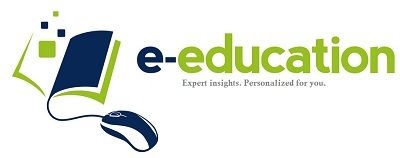While Instructional Design is concerned with providing learners with an effective and memorable learning experience, eLearning development is concerned with bringing the Instructional Designer’s vision to life through the use of various tools, tactics, programming, and creativity. While Instructional Design is about enlisting the help of a Subject Matter Expert and focusing on the needs of the beginner learner, an eLearning developer must be able to comprehend and put the Instructional Designer’s vision into action. They must create a course that adheres to the blueprints put out by the Instructional Designer.
Simply put, Instructional Designers create the broad outlines of the course, researching pedagogical approaches and determining what types of skills or knowledge the learner requires, while the eLearning developer takes these ideas and creates the actual instructional material, following the Instructional Designer’s recommendations. However, in many businesses, a single person fulfils both of these functions, leading to misunderstanding.
Let’s look at the many stages of an eLearning course’s design and development to see how the roles of an Instructional Designer and an eLearning developer are split.
Discussing the course’s scope and/or design
Before beginning design and development, the Instructional Designer will need to meet with stakeholders, usually the organization’s higher-ups, to determine how the course will look and feel, as well as which features will be included. Then, to put everything on paper, a design document will be prepared.
Establishing Course Goals
Following the creation of the design document, the Instructional Designer will consult with stakeholders to determine the course objectives. They will gather any information they have from them here, which could range from links to current websites to scanned handwritten notes to a rough plan in Word Doc or PDF. In addition, the Instructional Designer will draw out interactions and activities to ensure that these goals are met in the most engaging and memorable way possible.
Content Creation
This is where an eLearning developer is usually brought in. The Instructional Designer will explain everything to the eLearning developer, and they will be given all of the materials and research. If the Instructional Designer hasn’t previously done so, they will consult with SMEs (Subject Matter Experts), and even if they have, they will consult with SMEs as needed. They’ll next break the information into lessons and subjects, incorporate it in a storyboard, and present it to the client for approval.
Review
Stakeholders, the user (if one exists), or the L&D manager will all evaluate the storyboard. Any necessary adjustments will be incorporated into the storyboard, which will be evaluated repeatedly until it is ready to be built into a whole course.
Production
The real creation or production of the course begins once the storyboard has been authorised. Because the eLearning developer already has everything they need, all they have to do now is insert all of the content in the course with the appropriate navigation activities, animations, and interactions, add any necessary programming or code, and convert it into a learning unit. This course will be reviewed by the relevant authorities on a regular basis, and the eLearning developer will make revisions until it is ready to be presented to the students.
The roles and responsibilities of an Instructional Designer and an eLearning developer are clearly defined throughout the design and production of an eLearning course

